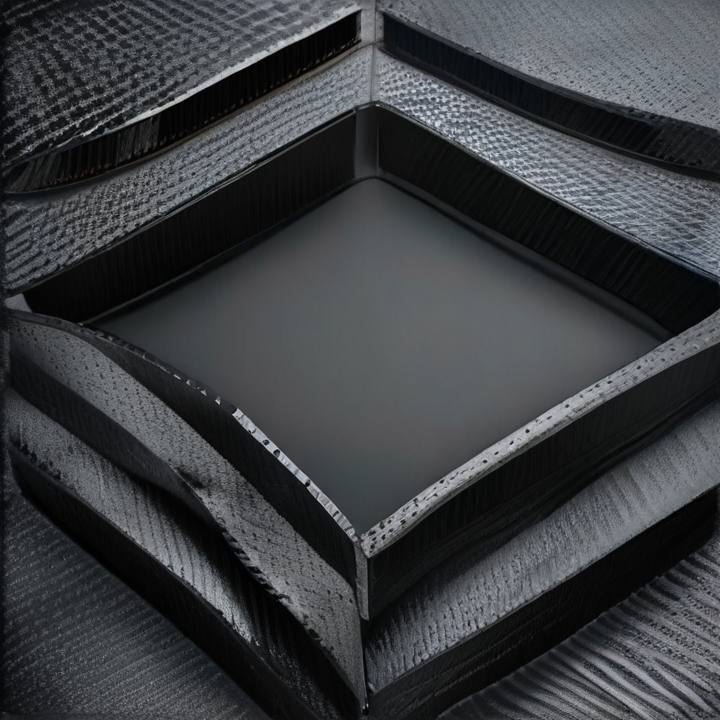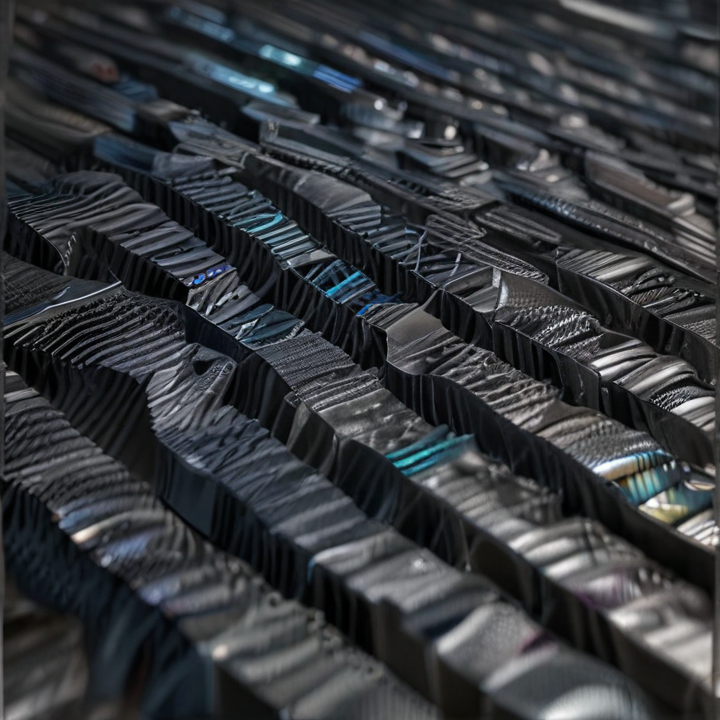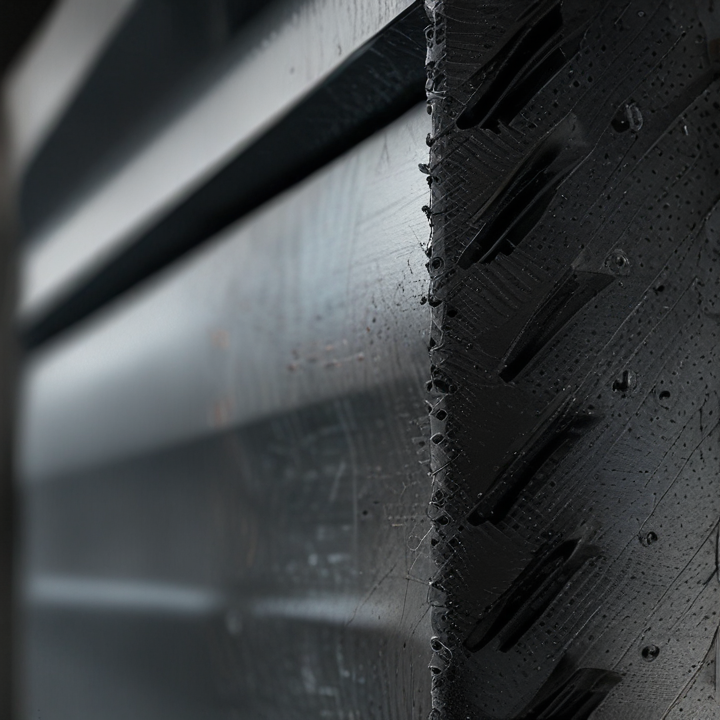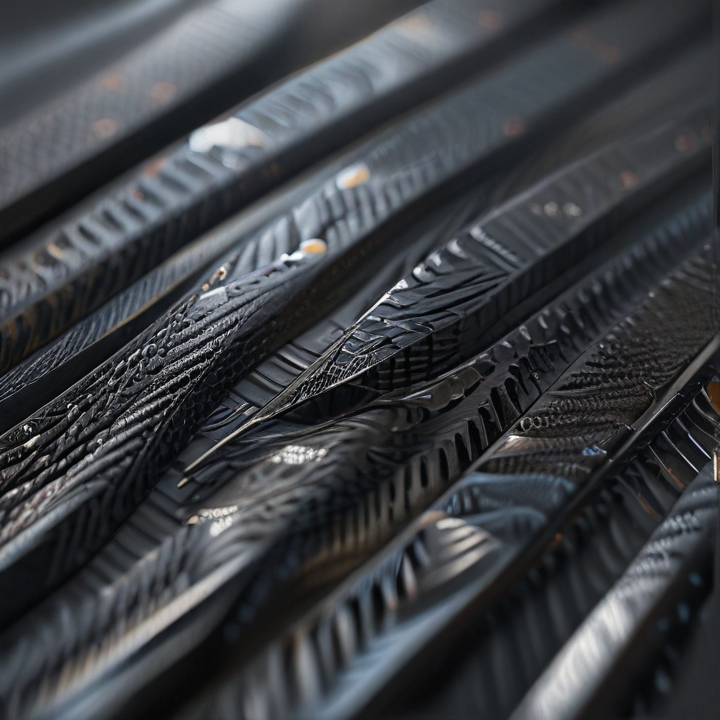custom carbon fiber parts Safety Certifications
Custom carbon fiber parts, known for their lightweight and high-strength properties, are increasingly used in industries such as automotive, aerospace, and sports. However, ensuring their safety requires adherence to specific certifications and standards.
1. ISO 9001: This is a general standard for quality management systems. Manufacturers of carbon fiber components must often adhere to ISO 9001 to ensure consistent quality and regulatory compliance.
2. SAE Standards: The Society of Automotive Engineers (SAE) publishes various standards addressing material properties and testing methods for carbon fiber components used in the automotive industry.
3. FAA Approval: For aerospace applications, custom carbon fiber parts must meet Federal Aviation Administration (FAA) regulations. Parts often require stringent testing for impact resistance, fatigue, and environmental effects.
4. ASTM Standards: The American Society for Testing and Materials (ASTM) provides a range of standards (e.g., ASTM D3039 for tensile properties of polymer matrix composites) that outline testing methods to evaluate the mechanical properties of carbon fiber components.
5. CE Marking: For products entering the European market, CE marking ensures compliance with European Union safety, health, and environmental protection standards. This often includes comprehensive testing and documentation.
6. UL Certification: Underwriters Laboratories (UL) offers certification for materials and products to ensure they meet safety standards regarding flammability, electrical insulation, and overall durability.
7. RoHS Compliance: The Restriction of Hazardous Substances (RoHS) directive restricts the use of specific hazardous materials in electrical and electronic components, including those made with carbon fiber.
Adhering to these certifications ensures that custom carbon fiber parts are safe, reliable, and suitable for their intended applications. Compliance not only mitigates risk but also enhances customer trust and market acceptance.
List Reference Technical Parameters of "custom carbon fiber parts"
Custom carbon fiber parts are highly sought-after due to their strength, lightweight properties, and versatility. Here are some key technical parameters to consider:
1. Fiber Type and Quality:
- High-Modulus (HM): Excellent stiffness, moderate strength.
- Intermediate Modulus (IM): Balanced stiffness and high strength.
- High-Strength (HS): Lower stiffness, very high strength.
2. Weave Patterns:
- Plain Weave: Balanced and straightforward; moderate strength.
- Twill Weave: Diagonal pattern; improved drapeability and aesthetics.
- Unidirectional: Fibers aligned in one direction; optimized for specific load paths.
3. Resin System:
- Epoxy: Commonly used for its strong bonding and high strength-to-weight ratio.
- Polyester: Cost-effective but lower performance.
- Vinyl Ester: Better toughness and chemical resistance.
4. Layer Orientation:
- 0°/90°: Standard for balanced properties.
- ±45°: Enhances shear and torsional strength.
- Custom Layups: Tailored to meet specific stress and load requirements.
5. Curing Process:
- Autoclave: High pressure and heat, ensures void-free, high-strength parts.
- Out-of-Autoclave (OOA): Vacuum bagging and oven curing; cost-effective for large parts.
- Room Temperature Cure: Simplified tooling, suitable for less critical applications.
6. Thickness and Ply Count:
- Determines the strength and stiffness. Typically ranges from 0.005" per ply.
7. Surface Finish Options:
- Gloss: High aesthetic appeal.
- Matte: Reduces glare, functional aesthetic.
- Textured: Improved grip and durability.
8. Tensile Strength and Modulus:
- Tensile Strength: 500–1000 MPa.
- Tensile Modulus: 50–80 GPa.
9. Environmental Resistance:
- Good resistance to corrosion, UV, and chemicals, depending on the resin system.
10. Customizability:
- Tailored geometry, surface finishes, and mechanical properties.
Understanding these parameters ensures that custom carbon fiber parts meet the exact specifications and perform optimally in their intended applications.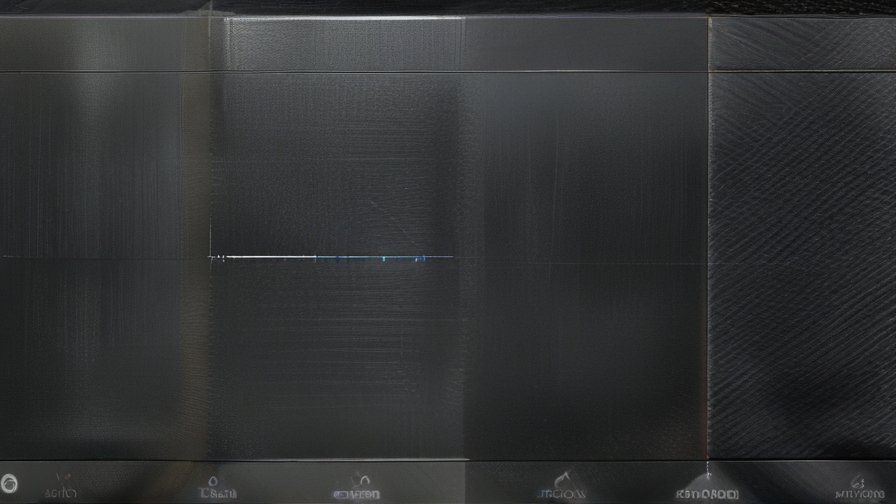
List Product features of "custom carbon fiber parts"
Custom carbon fiber parts are engineered to meet specific requirements and offer a range of features suited for various applications. Here are the key product features:
1. Lightweight: Custom carbon fiber parts provide high strength-to-weight ratios, making them significantly lighter than traditional materials such as metal while maintaining the same or greater strength.
2. High Strength and Durability: These parts are exceptionally strong and resistant to impact and wear, making them ideal for demanding applications.
3. Customizability: Tailor-made to fit specific design needs, these parts can be customized in terms of shape, size, and finish. This flexibility allows for precise adherence to design specifications.
4. Aesthetic Appeal: Carbon fiber parts possess a sleek, modern look with a unique woven appearance, enhancing the visual appeal of any product.
5. Corrosion Resistance: Unlike metals, carbon fiber does not corrode, making these parts ideal for use in corrosive environments or industries such as marine and aerospace.
6. Thermal Stability: Capable of withstanding wide temperature ranges, custom carbon fiber parts maintain their integrity under both extreme heat and cold.
7. Electrical Conductivity: Depending on the weave and resin used, carbon fiber parts can be either electrically conductive or insulating, providing versatility for different applications.
8. Low Thermal Expansion: These parts exhibit minimal thermal expansion, ensuring stable performance and fit even under temperature fluctuations.
9. High Stiffness: The rigidity of carbon fiber makes it perfect for applications requiring materials that do not flex under stress.
10. Fatigue Resistance: Custom carbon fiber components are highly resistant to fatigue, prolonging their life span even under repeated stress.
11. Environmental Friendliness: Carbon fiber materials can be recycled and are considered more environmentally friendly compared to many other composites.
12. Precision Engineering: Advanced manufacturing techniques such as CNC machining and autoclave processing ensure high precision and quality in custom carbon fiber parts.
These features make custom carbon fiber parts an attractive choice for industries ranging from automotive and aerospace to sports and consumer electronics.
List Various Types of "custom carbon fiber parts"
Custom carbon fiber parts span a wide array of applications, owing to carbon fiber's exceptional strength-to-weight ratio, durability, and aesthetic appeal. Here are several types of custom carbon fiber parts:
1. Automotive Parts:
- Body Panels: Custom hoods, spoilers, bumpers, and side skirts.
- Interior Trim: Dashboards, console covers, and door inserts.
- Structural Components: Frame reinforcements, strut bars, and suspension parts.
2. Bicycle Components:
- Frames: Tailor-made road, mountain, and racing bike frames.
- Accessories: Handlebars, seat posts, and cranksets.
- Wheelsets: Custom rims and hubs for reduced weight and improved aerodynamics.
3. Aerospace Parts:
- Structural Components: Fuselage sections, wing spars, and tail fins.
- Interior Fitments: Cabin partitions, seating frames, and cargo panels.
4. Marine Components:
- Hull Panels: Lightweight, high-strength custom hull sections.
- Interior Fittings: Helm stations, seating, and table surfaces.
- Masts and Booms: Custom spars for sailboats and racing yachts.
5. Sporting Goods:
- Racquets: Custom-made tennis, badminton, and squash racquets.
- Golf Clubs: Shafts and club heads tailored for performance.
- Fishing Rods: Custom rod blanks and handles for specific angling needs.
6. Medical Devices:
- Prosthetics: Custom prosthetic limbs offering strength and weight benefits.
- Orthotic Devices: Braces and supports molded to individual requirements.
- Surgical Tools: Lightweight, high-precision instruments.
7. Electronics:
- Device Enclosures: Custom cases for laptops, phones, and cameras.
- Drones: Lightweight frames and propeller blades.
8. Architectural Elements:
- Structural Panels: Lightweight, high-strength panels for roofing and walls.
- Interior Design: Custom furniture, decorative panels, and lighting fixtures.
9. Robotics:
- Arms and Joints: Lightweight, high-strength components for improved performance.
- Structural Frames: Custom frameworks for industrial and consumer robots.
Custom carbon fiber parts offer unique benefits tailored to specific performance and aesthetic requirements across these diverse fields.
List Application of "custom carbon fiber parts"
Custom carbon fiber parts are renowned for their exceptional strength-to-weight ratio, making them indispensable across various industries. Below are key applications where custom carbon fiber parts are commonly used:
1. Aerospace: In aircraft manufacturing, carbon fiber parts are used for components such as wings, fuselages, and tail structures, reducing weight and improving fuel efficiency.
2. Automotive: High-performance and luxury vehicles frequently use custom carbon fiber parts for body panels, chassis components, and interior trim to enhance speed, fuel efficiency, and aesthetics.
3. Sports Equipment: Custom carbon fiber is utilized in crafting lightweight, high-strength sporting goods like tennis rackets, hockey sticks, bicycles, and surfboards, offering athletes improved performance.
4. Medical Devices: In the medical field, carbon fiber is employed in the production of prosthetics, orthotic devices, and surgical instruments due to its biocompatibility and durability.
5. Marine Industry: Boats and yachts benefit from custom carbon fiber parts in hulls, masts, and other structural components, providing increased strength and reduced weight.
6. Renewable Energy: In wind energy, carbon fiber is used to manufacture turbine blades, enhancing efficiency and longevity through its superior mechanical properties.
7. Robotics and Automation: Custom carbon fiber parts are integral in robot arms and automation systems, providing a balance of rigidity and lightweight, which is crucial for precision and speed.
8. Electronics: Heat-dissipating and EMI shielding properties of carbon fiber make it suitable for cases and structural parts in laptops, smartphones, and other electronic devices.
9. Architecture: Custom carbon fiber components are increasingly employed in construction for load-bearing and decorative elements, offering innovative design options due to their flexibility and robustness.
10. Motorsports: In racing, the application of custom carbon fiber parts extends to car bodies, suspension components, and even driver safety gear, maximizing performance and protection.
These diverse applications underscore the versatility and critical importance of custom carbon fiber parts in advancing technology and performance across multiple sectors.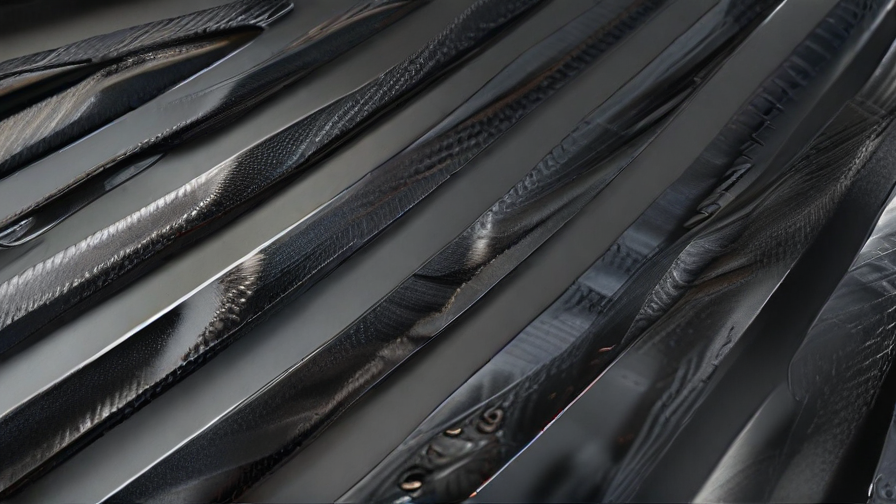
List Buyer Types of "custom carbon fiber parts"
When it comes to custom carbon fiber parts, the buyers span a wide range of industries due to the material's exceptional strength-to-weight ratio and aesthetic appeal. Here are primary buyer types:
1. Automotive Enthusiasts and Manufacturers:
- Performance and Racing Markets: These buyers seek custom carbon fiber parts such as body panels, spoilers, and chassis components to enhance performance and aesthetics.
- Luxury and Sports Car Manufacturers: Companies like Ferrari and Lamborghini use carbon fiber extensively in their high-end vehicles for weight reduction and increased performance.
2. Aerospace and Aviation:
- Carbon fiber's lightweight nature and high strength make it ideal for aircraft components, including fuselage parts, wings, and interior elements.
3. Marine Industry:
- Boat and yacht manufacturers utilize custom carbon fiber parts for hulls, decks, and other components to reduce weight and improve fuel efficiency.
4. Bicycle and Sports Equipment Manufacturers:
- High-end bicycle frames, tennis rackets, and golf clubs often feature carbon fiber for its lightweight yet strong properties.
5. Medical Equipment:
- Custom carbon fiber parts are used in prosthetics, orthotics, and various medical devices where lightweight strength is crucial.
6. Consumer Goods:
- High-end consumer electronics, sports gear, and accessories like phone cases, wallets, and watches capitalize on carbon fiber's unique aesthetic and durability.
7. Industrial Applications:
- Industries such as robotics and automation integrate carbon fiber parts for their tools and machinery to increase efficiency by reducing weight without compromising strength.
8. Renewable Energy:
- Wind turbine manufacturers use custom carbon fiber parts for blades to enhance performance and longevity.
9. Research and Development:
- Institutions and companies developing new technologies often require custom carbon fiber components for prototypes and innovative applications.
In summary, buyers of custom carbon fiber parts range across high-performance automotive sectors, aerospace, boating, sports equipment, medical technology, consumer goods, industrial applications, renewable energy, and R&D endeavors, all valuing the material's superior performance characteristics.
List "custom carbon fiber parts" Project Types for Different Industries
Custom carbon fiber parts are appreciated for their high strength-to-weight ratio, durability, and sleek appearance, making them suitable for various industries. Here are some project types across different sectors:
1. Aerospace:
- Aircraft Components: Wing spars, fuselage sections, and interior panels benefit from weight savings and rigidity.
- Satellite Components: Lightweight panels and structural components to enhance payload capacity and durability in space conditions.
- Drones/UAVs: Frames, propellers, and housing units for reduced weight and increased flight time.
2. Automotive:
- Body Panels: Hoods, fenders, and roofs for performance enhancement and improved fuel efficiency.
- Interior Components: Dashboard trims, center consoles, and seat frames for a stylish, lightweight solution.
- Performance Parts: Spoilers, diffusers, and intake manifolds for improved aerodynamics and engine performance.
3. Marine:
- Boat Hulls: Durable and lightweight hulls for racing and recreational boats.
- Masts and Rigging: High-strength components to improve sailing efficiency and speed.
- Interiors: Lightweight cabinetry and fixtures to improve stability and speed.
4. Sporting Goods:
- Bicycles: Frames, forks, and handlebars that provide strength without the weight.
- Rackets: Tennis, squash, and badminton rackets for enhanced performance.
- Water Sports: Surfboards, paddleboards, and kayaking equipment that offer durability and lightness.
5. Medical:
- Prosthetics: Strong and lightweight prosthetic limbs for enhanced mobility.
- Imaging Equipment: MRI and CT scanner components that provide strength and non-magnetic properties.
- Surgical Instruments: Durable and lightweight surgical tools for improved handling.
6. Industrial:
- Robotics: Frames and arms for increased payload capacity and operational efficiency.
- Machinery Components: Wear-resistant gears and components that reduce operational weight and energy consumption.
- Tooling: Molds and fixtures for precision manufacturing.
7. Consumer Electronics:
- Casings: Sleek, durable cases for laptops, tablets, and smartphones.
- Wearables: Lightweight and strong housings for smartwatches and fitness trackers.
- Audio Equipment: High-performance, resonance-free enclosures for speakers and headphones.
These custom carbon fiber parts are integral to advancing technology and performance across multiple industries.
custom carbon fiber parts Accessories Upgrades and Custom Manufacturing Options
Custom carbon fiber parts offer unparalleled strength-to-weight ratios, making them an optimal choice for various applications. Whether you're enhancing a vehicle's performance, upgrading sports equipment, or creating bespoke accessories, carbon fiber is a premium material that stands out.
Accessories: For automotive enthusiasts, carbon fiber accessories such as spoilers, mirror caps, and interior trims can dramatically enhance a vehicle’s aesthetic and aerodynamic performance. Cyclists may appreciate custom carbon fiber bike frames and components for their lightweight properties and durability. Additionally, electronics enthusiasts can find custom carbon fiber phone cases, laptop skins, and gaming accessories that combine sleek design with robust protection.
Upgrades: Custom carbon fiber upgrades can significantly boost performance in industries like motorsports, aerospace, and even musical instruments. Car enthusiasts might consider carbon fiber body kits, panels, or engine components to reduce weight and improve speed and efficiency. In aerospace, carbon fiber upgrades can result in lighter, more fuel-efficient aircraft. Musicians can benefit from carbon fiber instruments, such as violins and cellos, that offer enhanced durability and tonal quality.
Custom Manufacturing Options: The versatility of carbon fiber allows for tailored manufacturing to meet specific needs. Methods like mold-based fabrication, 3D printing, and resin transfer molding enable the creation of highly customized parts. Clients can choose from a range of finishes, including gloss, matte, and colored carbon fiber, to match their style preferences. Innovations in carbon fiber weaving techniques also offer unique aesthetic patterns, adding a touch of elegance to functional components.
In summary, custom carbon fiber parts provide numerous benefits and options for personalization across various fields. From accessories and performance upgrades to bespoke manufacturing solutions, carbon fiber’s adaptability and superior physical properties make it an excellent choice for those seeking premium, high-performance outcomes.
List Quality Control and The Manufacturing Process of "custom carbon fiber parts"
Quality Control of Custom Carbon Fiber Parts
1. Raw Material Inspection: Ensure the carbon fiber fabric and resin meet specific standards for tensile strength and consistency.
2. Lay-Up Inspection: Verify that the fiber orientation and resin distribution are in accordance with design specifications.
3. Curing Process: Monitor temperature and pressure during the curing to ensure that the part achieves its mechanical properties.
4. Dimensional Accuracy: Use precision tools like laser scanners to check tolerances.
5. Non-Destructive Testing (NDT): Techniques such as ultrasonic scanning, X-ray, or thermal imaging detect internal flaws.
6. Visual Inspection: A final check for surface defects like voids, wrinkles, or resin-rich areas.
7. Mechanical Testing: Perform tensile, compression, and impact tests on sample pieces to verify structural integrity.
Manufacturing Process of Custom Carbon Fiber Parts
1. Design and Prototyping:
- Design: Use CAD software for the part design, considering load paths and application-specific requirements.
- Prototype: Create a prototype using rapid prototyping techniques for initial validation.
2. Pattern and Mold Creation:
- Pattern: A master pattern is made from material like foam or wood, serving as a template.
- Mold: The pattern is used to create a mold, usually from aluminum or high-temperature resistant composite materials.
3. Lay-Up:
- Fabric Cutting: Carbon fiber fabric is cut to specific shapes and sizes.
- Layering: Apply layers of carbon fiber fabric into the mold based on the design specification, ensuring proper orientation.
- Resin Application: Apply resin using methods like wet lay-up, resin transfer molding (RTM), or vacuum bagging.
4. Curing:
- Vacuum Bagging: The layered mold is sealed and vacuum pressure is applied to remove air bubbles.
- Autoclave: The mold is then subjected to controlled heat and pressure in an autoclave to cure the composite.
5. Demolding and Post-Cure:
- Demolding: The part is carefully removed from the mold once cured.
- Post-Cure: Additional heat treatment may be applied to further improve mechanical properties.
6. Machining and Finishing:
- Trimming: Excess material is trimmed using CNC machines.
- Surface Finishing: Sanding and polishing for desired surface quality.
- Coating: If required, apply protective or aesthetic coatings.
7. Final Inspection and Assembly:
- Quality Checks: Recheck dimensions and surface quality.
- Assembly: Assemble multiple parts if required and perform a final inspection before delivery.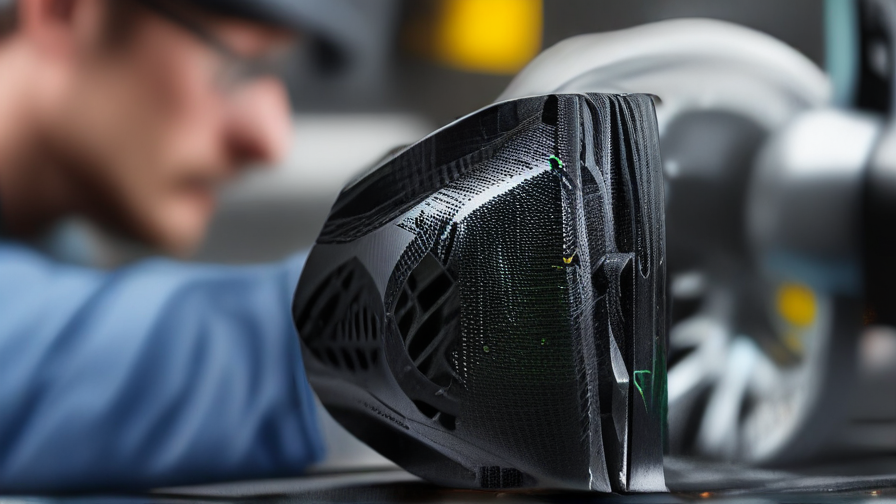
How to use "custom carbon fiber parts"
Custom carbon fiber parts are highly versatile and utilized across various industries due to their strength, lightweight properties, and aesthetic appeal. Here’s a brief guide on how to use them:
1. Automotive Applications: Custom carbon fiber parts such as hoods, spoilers, and side skirts can enhance vehicle performance by reducing weight and increasing rigidity. Installation typically involves removing the original part and securing the carbon fiber replacement using standard mounting points and hardware.
2. Aerospace and Drones: Use custom carbon fiber components like fuselages and rotor blades for drones to ensure optimal flight performance and fuel efficiency. These can be attached using specialized adhesives or fasteners designed for high-strength materials.
3. Sporting Goods: In bicycles, tennis rackets, and other sporting equipment, carbon fiber parts improve performance and durability. For example, replace a standard bike frame with a carbon fiber one by ensuring precise alignment of all joints and securely fastening with appropriate bolts.
4. Medical Devices: Custom carbon fiber parts in prosthetics offer superior strength and comfort. Fitting these involves precise measurement and alignment to ensure optimal patient comfort and mobility.
5. Technology and Gadgets: Enhance the durability and ergonomics of gadgets, like smartphones and laptops, with custom carbon fiber casings. These can be adhered using industrial-grade adhesives or clips designed for electronic components.
6. Marine Industry: Utilize carbon fiber in boat hulls and masts to reduce weight and increase speed. Typically, this involves laminating the carbon fiber parts with marine-grade resin to ensure a waterproof and robust assembly.
When using custom carbon fiber parts, ensure you have the right tools and adhesives. Always follow the manufacturer's guidelines for installation and maintenance to retain the integrity and performance of the parts.
"custom carbon fiber parts" Comparative Analysis
Comparative Analysis of Custom Carbon Fiber Parts
Strength-to-weight Ratio:
Custom carbon fiber parts are known for their exceptional strength-to-weight ratio compared to materials like aluminum and steel. Carbon fiber composites are significantly lighter while maintaining or exceeding the tensile strength of metals, offering enhanced performance in aerospace, automotive, and sporting goods industries.
Customization Flexibility:
The manufacturing process for carbon fiber parts allows for high levels of customization. Techniques like lay-up and molding can produce intricate shapes and designs tailored to specific requirements. This flexibility is superior to metal parts, which might require additional machining and are often limited by the properties of metal alloys.
Durability and Corrosion Resistance:
Carbon fiber is highly resistant to corrosion, unlike metals, which can rust or corrode over time. This makes carbon fiber parts more durable and longer-lasting in harsh environments, such as marine applications or areas with salty air.
Cost Considerations:
One significant downside is the cost. Custom carbon fiber parts are generally more expensive due to the materials and labor involved in their production. The cost can be justified by the superior performance and longevity, but it remains a barrier for budget-constrained applications.
Thermal Conductivity:
Carbon fiber has lower thermal conductivity compared to metals. While this can be an advantage in certain applications requiring thermal insulation, it can be a drawback in situations where heat dissipation is required, such as in high-performance engines and electronic housings.
Aesthetic Appeal:
Carbon fiber has a unique and modern aesthetic, which often adds to the perceived value of the product. This has led to its popularity in high-end consumer goods, such as luxury cars, sporting equipment, and electronics.
Environmental Impact:
The production of carbon fiber involves significant energy consumption and emits greenhouse gases, making its environmental footprint larger compared to some metals. Recycling carbon fiber is also more challenging, although advances are being made in sustainable practices.
In summary, custom carbon fiber parts offer remarkable benefits in strength, durability, and customization, but they come at a higher cost and environmental impact. The choice to use carbon fiber should be based on a careful consideration of these factors relative to the specific application.
"custom carbon fiber parts" Warranty and Support
Warranty and Support for Custom Carbon Fiber Parts
Our custom carbon fiber parts come with a comprehensive warranty and robust support to ensure your utmost satisfaction and confidence in our products.
Warranty:
We offer a one-year limited warranty on all our custom carbon fiber parts, commencing from the date of delivery. This warranty covers any defects in materials and workmanship under normal use and conditions. Should a defect be identified, we will repair or replace the part at no additional cost. Please note that this warranty does not cover damage resulting from misuse, accidents, unauthorized modifications, or external factors beyond our control, such as environmental impacts.
Support:
Our dedicated support team is available to assist you with any inquiries or issues you may encounter. Whether you have questions about installation, maintenance, or performance, our team is ready to provide prompt and comprehensive assistance. You can reach us via:
- Email: [email protected]
- Phone: +1 (800) 123-4567 (Monday to Friday, 9 AM - 5 PM EST)
- Live Chat: Available on our website during business hours
- Support Tickets: Submit a ticket through our online portal for tracking and detailed responses
Additionally, we provide a range of online resources, including FAQs, troubleshooting guides, and video tutorials, to help you get the most out of your custom carbon fiber parts.
Ensuring customer satisfaction is our top priority. With our reliable warranty and responsive support services, you can confidently purchase and use our custom carbon fiber parts knowing that we stand behind the quality and durability of our craftsmanship.
List "custom carbon fiber parts" FAQ
Certainly! Here's a concise FAQ for custom carbon fiber parts:
Custom Carbon Fiber Parts FAQ
1. What are custom carbon fiber parts?
Custom carbon fiber parts are tailor-made components fabricated from carbon fiber composite, designed specifically to meet unique requirements for various applications, including automotive, aerospace, and sporting equipment.
2. Why choose carbon fiber?
Carbon fiber is chosen for its high strength-to-weight ratio, stiffness, lightweight, and resistance to corrosion and fatigue. It’s an ideal material for performance-driven applications.
3. How are custom carbon fiber parts made?
These parts are typically created using a process that includes designing, cutting carbon fiber sheets, laying them up in molds, and curing them in an autoclave or an oven. Advanced techniques like resin transfer molding (RTM) may also be used.
4. Can I get a one-off custom part made?
Yes, many manufacturers specialize in one-off custom parts, although the lead time and cost may be higher compared to mass-produced items due to the bespoke nature of the work.
5. What is the lead time for custom carbon fiber parts?
Lead times can vary depending on complexity, volume, and the manufacturer’s schedule. Generally, it can take anywhere from a couple of weeks to a few months.
6. Are there design limitations?
While carbon fiber is highly versatile, there are some limitations related to the moldability of complex shapes and intricacies. Detailed consultation with the manufacturer can help navigate these constraints.
7. How do I care for carbon fiber parts?
Carbon fiber parts require minimal maintenance. Cleaning with a mild soap solution and avoiding harsh chemicals can help maintain their integrity and appearance.
8. Is custom carbon fiber expensive?
The cost can be higher than conventional materials due to the specialized processes involved; however, the performance benefits often justify the expense.
9. Can damaged carbon fiber parts be repaired?
Minor damages can often be repaired, but severe structural damages might require part replacement. Always consult professionals for repair to ensure safety and integrity.
10. How do custom carbon fiber parts perform in high-temperature environments?
Carbon fiber performs well in high temperatures and is often preferred in high-performance and demanding environments, but the matrix material (resin) determines the exact temperature limits.
By understanding these key points, you can make informed decisions when considering custom carbon fiber parts for your projects.
Top 10 FAQ with answer about custom carbon fiber parts for Buyer Sourcing from China
Certainly! Here are the top 10 frequently asked questions (FAQ) about sourcing custom carbon fiber parts from China, alongside succinct answers:
1. What are the advantages of custom carbon fiber parts?
- Custom carbon fiber parts offer high strength-to-weight ratios, durability, and resistance to corrosion and fatigue. They are ideal for applications requiring lightweight and strong components.
2. What industries benefit from custom carbon fiber parts?
- Industries like aerospace, automotive, sports equipment, and medical devices commonly use custom carbon fiber parts due to their superior properties and performance.
3. Can Chinese manufacturers meet international quality standards?
- Yes, many Chinese manufacturers comply with international quality standards like ISO, ASTM, and AS9100, ensuring top-quality products. Verify certifications before placing orders.
4. How can I ensure the authenticity and reliability of a Chinese supplier?
- Conduct due diligence by verifying business licenses, auditing facilities, checking certifications, and consulting third-party inspection agencies.
5. What is the typical lead time for custom orders?
- Lead times vary but generally range from 4 to 12 weeks, depending on complexity, quantity, and production schedules.
6. Are there minimum order quantities (MOQs) when sourcing from China?
- Yes, MOQs can range from a few units to several hundred, depending on the manufacturer. Always negotiate based on your specific needs.
7. What are the common methods of communication with Chinese suppliers?
- Common methods include emails, phone calls, video conferences, and messaging apps like WeChat and WhatsApp.
8. What should I include in my request for quotation (RFQ)?
- Provide detailed specifications, drawings, materials requirements, quantities, desired lead times, and any quality standards or certifications needed.
9. How is shipping and logistics typically handled?
- Shipping can be facilitated via air, sea, or courier services. Discuss Incoterms (like FOB, CIF) and clarify who will handle customs clearance and duties.
10. What payment terms are typically offered?
- Common payment terms include T/T (Telegraphic Transfer), L/C (Letter of Credit), and sometimes PayPal for smaller orders. An initial deposit (often 30%) with the balance paid before shipment is standard.
By addressing these common questions, buyers can make informed decisions when sourcing custom carbon fiber parts from China.

